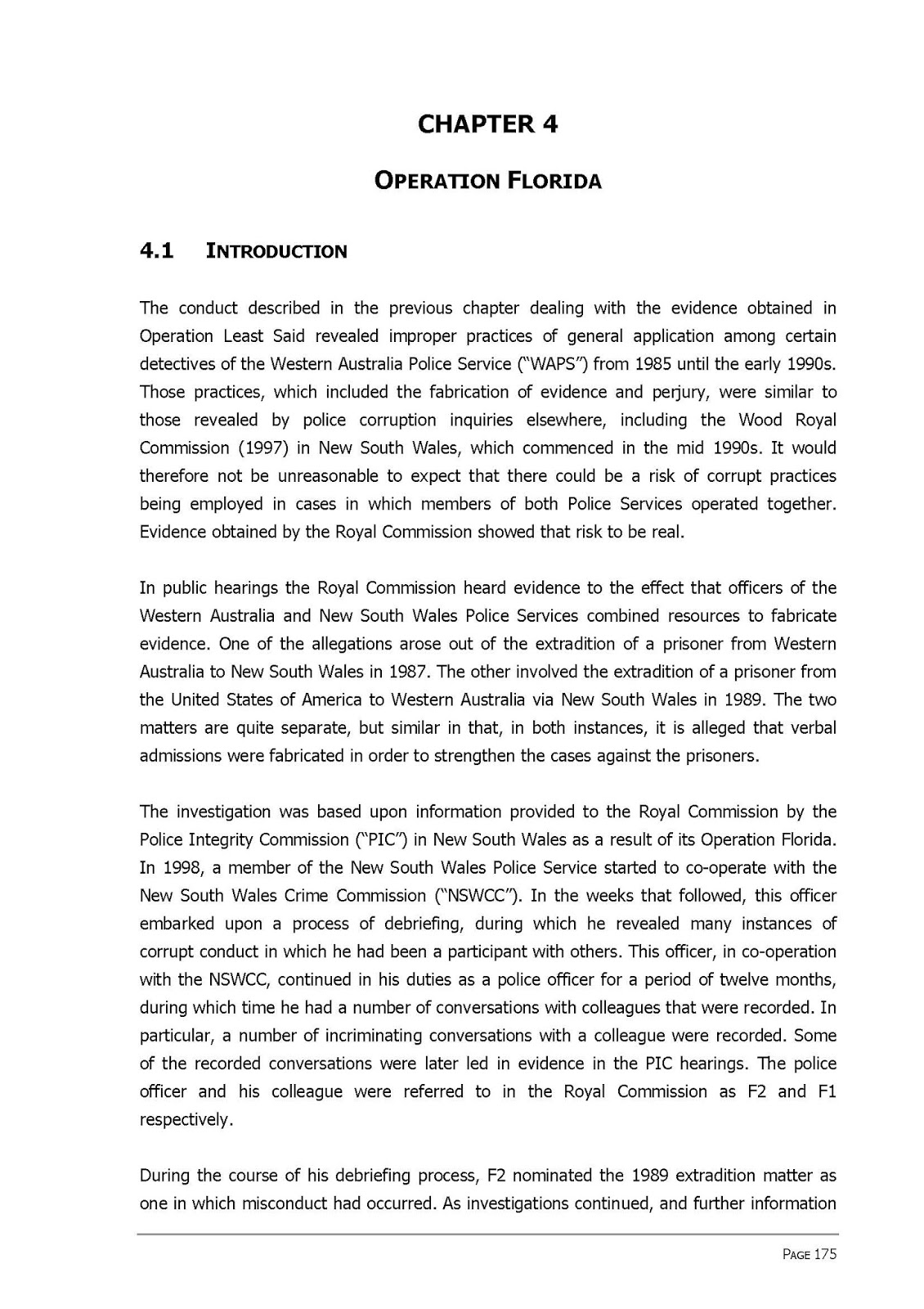The conduct described in the previous chapter dealing with the evidence obtained in Operation Least Said revealed improper practices of general application among certain detectives of the Western Australia Police Service (“WAPS”) from 1985 until the early 1990s.
Those practices, which included the fabrication of evidence and perjury, were similar to those revealed by police corruption inquiries elsewhere, including the Wood Royal Commission (1997) in New South Wales, which commenced in the mid 1990s. It would therefore not be unreasonable to expect that there could be a risk of corrupt practices being employed in cases in which members of both Police Services operated together.
Evidence obtained by the Royal Commission showed that risk to be real.
In public hearings the Royal Commission heard evidence to the effect that officers of the Western Australia and New South Wales Police Services combined resources to fabricate evidence. One of the allegations arose out of the extradition of a prisoner from Western Australia to New South Wales in 1987. The other involved the extradition of a prisoner from the United States of America to Western Australia via New South Wales in 1989. The twoters are quite separate, but similar in that, in both instances, it is alleged that verbal admissions were fabricated in order to strengthen the cases against the prisoners.
The investigation was based upon information provided to the Royal Commission by the Police Integrity Commission (“PIC”) in New South Wales as a result of its Operation Florida. In 1998, a member of the New South Wales Police Service started to co-operate with the New South Wales Crime Commission (“NSWCC”). In the weeks that followed, this officer embarked upon a process of debriefing, during which he revealed many instances of corrupt conduct in which he had been a participant with others. This officer, in co-operation with the NSWCC, continued in his duties as a police officer for a period of twelve months, during which time he had a number of conversations with colleagues that were recorded. In particular, a number of incriminating conversations with a colleague were recorded. Some of the recorded conversations were later led in evidence in the PIC hearings. The police officer and his colleague were referred to in the Royal Commission as F2 and F1
respectively.
During the course of his debriefing process, F2 nominated the 1989 extradition matter as one in which misconduct had occurred. As investigations continued, and further information

